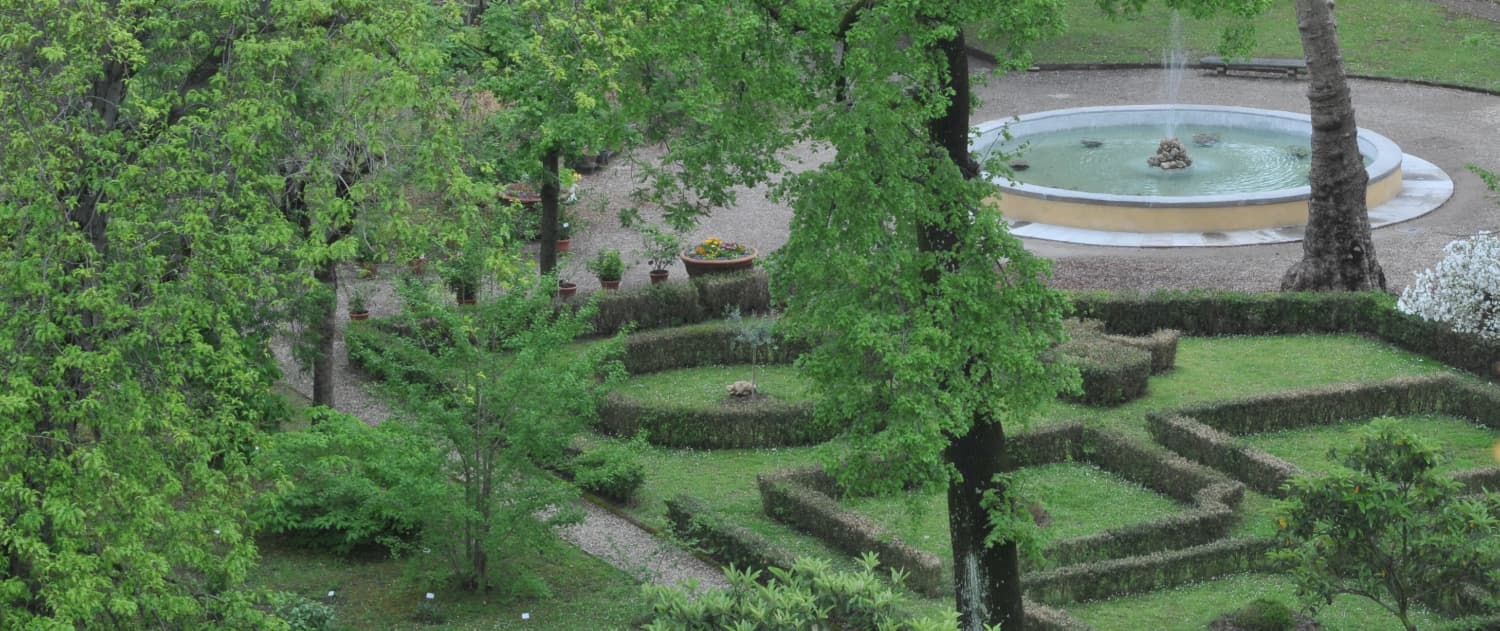Botanical Garden of Florence
Exhibits
All collections
Introduction | Acquatic | Citrus fruits | Trees | Wild edible plants | Araceae family | Wild shrubs | Begonias | Bromeliads | Carnivorous | Cycads | Grasses | Medicinals | Tropical orchids | Palms | Pteridophytes | Roses | Serpentinophytes | Succulent plants | Exhibits
Oriental Garden
This exhibit recreates a 'Tsuboniwa', a small garden combining a portion of land with plants and some symbolic elements (the rocks, the pagoda, the water point). This is flanked by a portion of 'Karesansui', also known as 'dry landscape', without plants.
This creation has taken into account the basic rules of the "dry garden" , so as not to betray its original layout, but has adapted the arrangement and number of rocks used so as to symbolically reproduce the Tuscan Archipelago with its seven islands. Those who have been lucky enough to glimpse, on a clear morning, from Mount Capanne on the Island of Elba, the amazing view of the islands of the Archipelago, will well understand the message of peace and calmness of mind that this arrangement has tried to reproduce.
Historical garden
In three separate flowerbeds there is the symbolic citation of the 'Italian-style garden'. In the first, a very geometric parterre of evergreen essences, mainly boxwood, has been reconstructed. In the second flowerbed, ancient roses and ancient cultivars of fruit trees have been grown in order to reconstruct the so-called 'secret garden', a garden of flowers and fruit. In the third, finally, shrubs and trees from the wildest part of the garden have been planted, with heliophilous broad eaves and species from the Mediterranean maquis and sclerophyll forests.
Kitchen garden
This is a sector entirely dedicated to those who self-produce vegetables. There are beds created according to the principles of organic-regenerative agriculture, from the “Ortobioattivo” method, developed by the Florentine agronomist Andrea Battiata, to the” no-dig “method, based on the elimination of soil tillage and the enrichment of soil fertility , through the addition of organic vegetable matter.
The exhibition supports the dissemination of sustainable horticulture and organinc farming.
Food plants and the products derived from them are part of everyday life, but often only the products derived from them - sugar, pasta, rice, pizza, wine, oil, preserves, fruit and vegetables, etc. - are known - and not the plants of origin: this section aims also to fill this gap and, at the same time, to explore the many issues related to plant-based food and sustainable cultivation.

